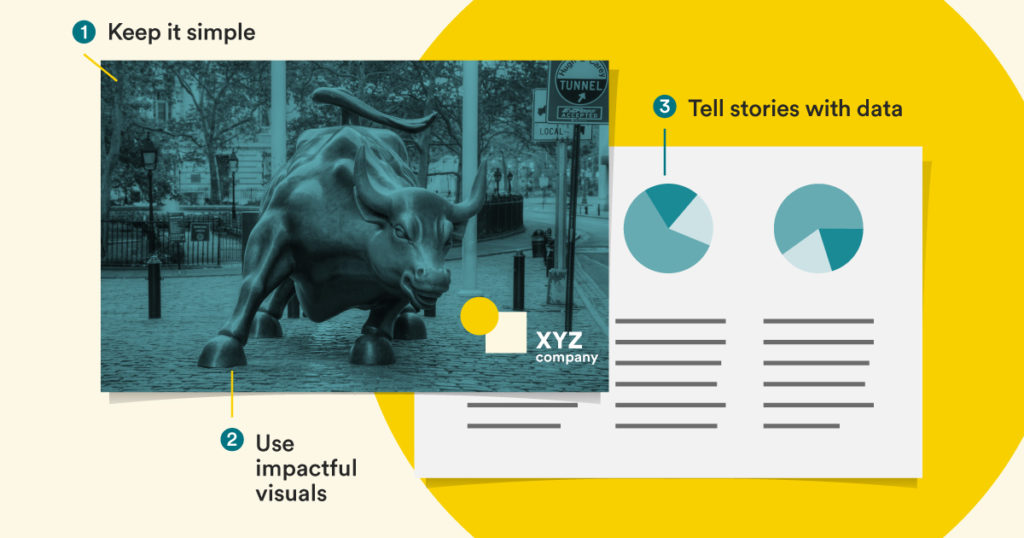
How to develop pitch-perfect presentations in the age of Zoom
The rise in virtual meetings brought about by the pandemic is here to stay. There’s no going back. With more employees working from home and cutbacks in business travel, videoconferencing platforms such as Zoom and Teams have been some of the fastest-growing apps of the pandemic.1
For marketers, this means it’s more important than ever to be able to effectively present online. But there are some key differences between getting up in front of a room full of people for the big pitch and engaging with an audience virtually.
Here are six ways you can optimize your digital presentation game:
1. Test the technology
We’ve all been there – sitting online, waiting. Logged into a meeting presentation, waiting for our host to try to figure out how to get their camera working or their presentation loaded or the sound to come through on the video they’re sharing. Nothing destroys an online presentation faster than a technical issue or makes it seem less professional than poor lighting. The answer? Practice in advance! Log in and check how you appear on camera. And reach out to a co-worker the day before to ask them if you can do a quick run-through to test the technology. If something isn’t working, this gives you time to fix it – or to learn how to make it work.
2. Know your audience
It’s hard to capture people’s attention – especially with the online temptation to multi-task. So, the most important place to start when creating a presentation is to research who you’re speaking to. Your pitch will need to be quite different when you’re speaking to a retail audience versus sophisticated institutional investors. You need to tailor the language, content and tone accordingly. Plus, researching your audience is a sign of respect. It indicates to your listeners that you’ve taken time to learn about them and understand their goals. It shows you’re well prepared and won’t waste their time.
3. Engage with visuals
A picture really is worth a thousand words. 65% of people are visual learners.2 That’s a plus when you’re sharing a presentation online. It’s far easier to explain complex financial concepts in simple terms through the use of charts and graphics. A little creative data visualization – presenting data in a compelling graphical format – goes a long way. By incorporating engaging visuals (charts, icons, graphs, typography and infographics) into your presentation, your audience is also more likely to retain your most important ideas and takeaways. Studies show 80% of people remember what they see, compared to only 10% what they hear and 20% what they read.3

4. Keep it short
Shorter is better when presenting online. In fact, according to a study by Microsoft, in today’s increasingly digital world, people’s average attention span when checking something out online has dropped to eight seconds, shorter than that of a goldfish.4 For an entire online presentation, the average adult attention span is 20 minutes.5 So, avoid information overload. Ensure your words and phrases are as concise as possible and allow for critical white space. Use divider slides and videos (with a recommended length of under two minutes)6 to help your audience stay engaged and allow them to take a respite from a wall of written content.
5. Make it interactive
One sure-fire way to get your audience to pay more attention to what you’re saying is to ask them for their input. By introducing interactive elements such as a communal icebreaker, quick poll or audience break-out room, you can connect with them more directly. Remember, it’s always more engaging to have a conversation with someone than it is to just listen to them speaking at you.
6. Inspire through storytelling
The very best speakers are entertainers. They understand how to present in an engaging storytelling manner. If you have a strong story plan that flows logically from one point to the next, you can capture their attention from start to finish. Like a good screenplay, a well-crafted pitch deck or other presentation should begin with the “why” then gradually reveal the “solution” and end with a “hook” or key takeaway.7
Presenting online can enable you to reach new audiences you could never reach before. Done well, it also provides you with the opportunity to engage those audiences in innovative and creative new ways that were never before possible.
Looking for support in developing your own pitch-perfect presentation? Ext. has the expertise you need. Contact us today to learn how we can support your marketing needs at 1.844.243.1830 or info@ext-marketing.com.
1businessofapps.com/data/zoom-statistics/
2papers.ssrn.com/sol3/papers.cfm?abstract_id=587201
3movableink.com/blog/29-incredible-stats-that-prove-the-power-of-visual-marketing
4time.com/3858309/attention-spans-goldfish/
5web.eecs.utk.edu/~bvanderz/presentation.html
62060digital.com/blog/right-video-length-platform/
7slidebean.com/blog/best-narrative-presentation-structure